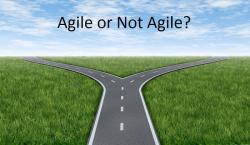This is the second in a series of articles that will give you strategies for aligning your Agile work to your organizational structures. The first article focused on delivering Agile projects within existing Project, Process and Quality Management frameworks. In this article, the focus is on delivering Agile projects within the existing corporate reporting structures of your organization.
Agile approaches provide a number of mechanisms for tracking progress, including formal reports (e.g. executive dashboards), status update tools (e.g. WIP boards and product backlogs), and ongoing communication with stakeholders.
The ideal Agile reporting environment would leverage these tools without asking staff to do extra (often redundant) work to meet corporate reporting requirements. Specifically, this would involve using:
























